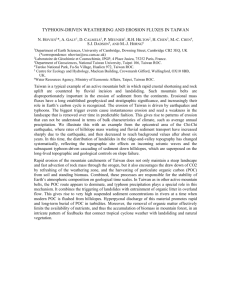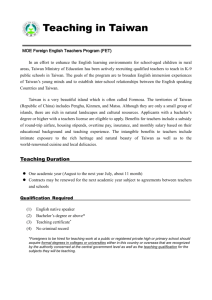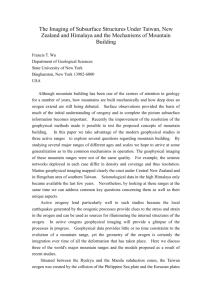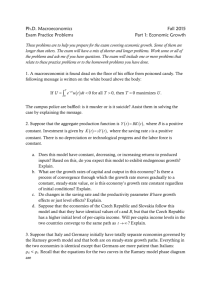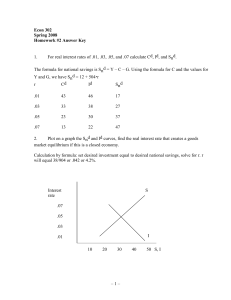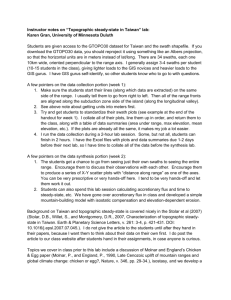Geology 4550: Tectonic Geomorphology
advertisement
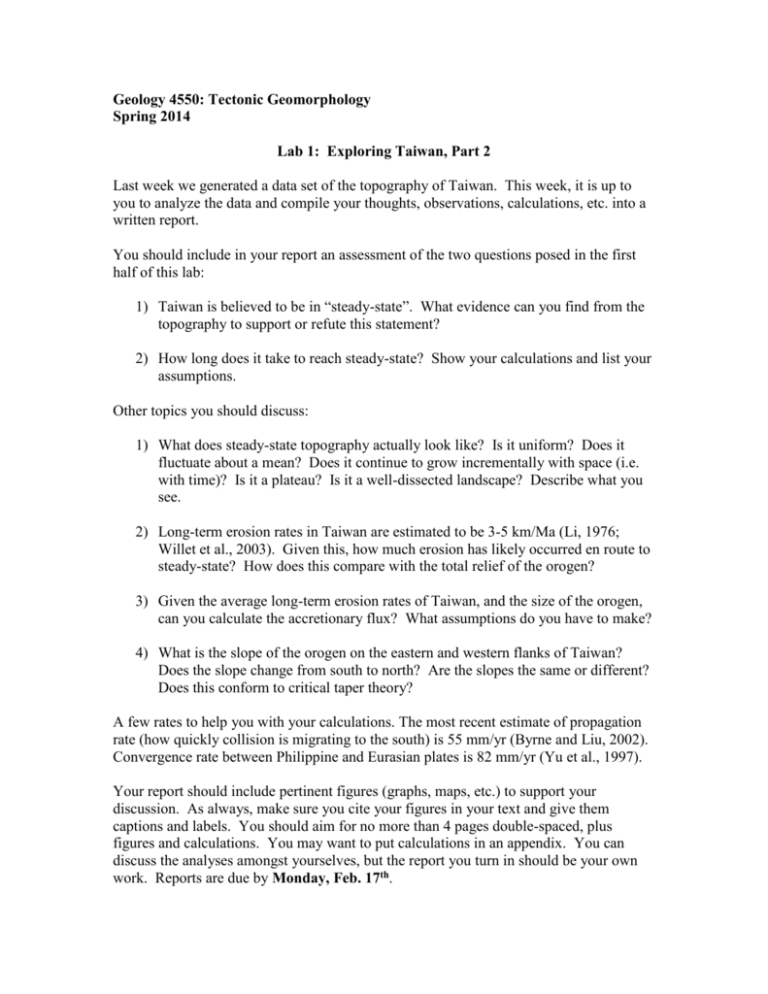
Geology 4550: Tectonic Geomorphology Spring 2014 Lab 1: Exploring Taiwan, Part 2 Last week we generated a data set of the topography of Taiwan. This week, it is up to you to analyze the data and compile your thoughts, observations, calculations, etc. into a written report. You should include in your report an assessment of the two questions posed in the first half of this lab: 1) Taiwan is believed to be in “steady-state”. What evidence can you find from the topography to support or refute this statement? 2) How long does it take to reach steady-state? Show your calculations and list your assumptions. Other topics you should discuss: 1) What does steady-state topography actually look like? Is it uniform? Does it fluctuate about a mean? Does it continue to grow incrementally with space (i.e. with time)? Is it a plateau? Is it a well-dissected landscape? Describe what you see. 2) Long-term erosion rates in Taiwan are estimated to be 3-5 km/Ma (Li, 1976; Willet et al., 2003). Given this, how much erosion has likely occurred en route to steady-state? How does this compare with the total relief of the orogen? 3) Given the average long-term erosion rates of Taiwan, and the size of the orogen, can you calculate the accretionary flux? What assumptions do you have to make? 4) What is the slope of the orogen on the eastern and western flanks of Taiwan? Does the slope change from south to north? Are the slopes the same or different? Does this conform to critical taper theory? A few rates to help you with your calculations. The most recent estimate of propagation rate (how quickly collision is migrating to the south) is 55 mm/yr (Byrne and Liu, 2002). Convergence rate between Philippine and Eurasian plates is 82 mm/yr (Yu et al., 1997). Your report should include pertinent figures (graphs, maps, etc.) to support your discussion. As always, make sure you cite your figures in your text and give them captions and labels. You should aim for no more than 4 pages double-spaced, plus figures and calculations. You may want to put calculations in an appendix. You can discuss the analyses amongst yourselves, but the report you turn in should be your own work. Reports are due by Monday, Feb. 17th.


